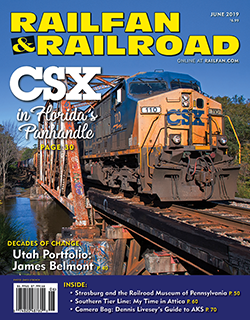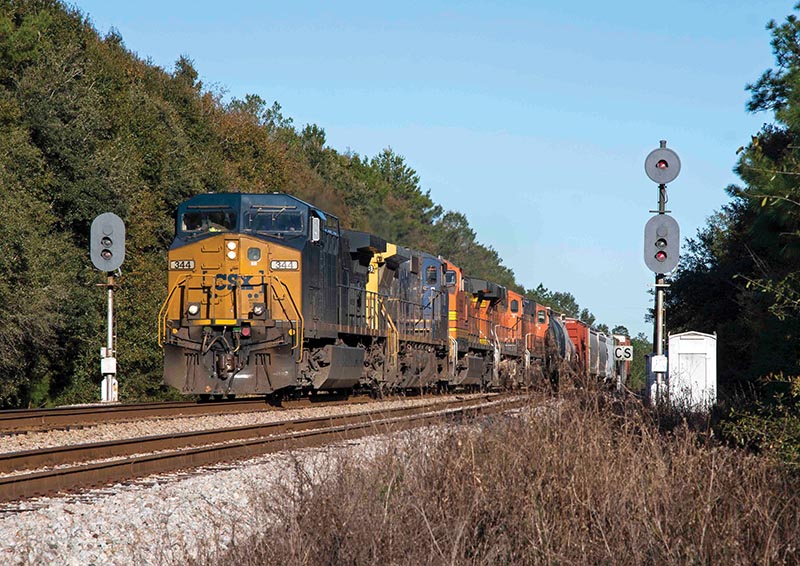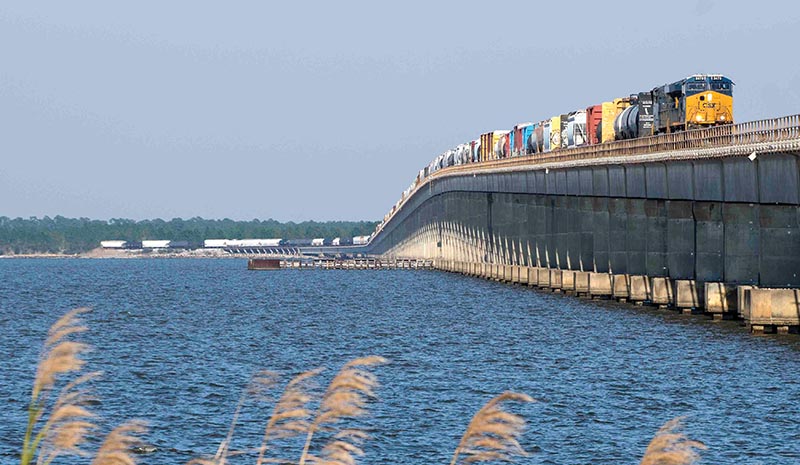 By Davis Strench/photos by the author
By Davis Strench/photos by the author
First Amtrak, now CSX. What’s next? The old Pensacola & Atlantic (P&A) is once again in a time of flux. Originally laid out in the early 1880s to connect Florida’s isolated Panhandle with the rest of the state, Louisville & Nashville Railroad in 1880 quickly grabbed P&A and integrated its western Florida route with the industry-rich L&N network that spanned the Southeast.
Through the Family Lines era and onto CSX, P&A was a bustling railroad, but in recent times that has all changed. Amtrak carried on the torch of passenger operations on the Florida Panhandle with the Sunset Limited operating all the way to Orlando via Jacksonville, until Hurricane Katrina’s landfall during summer 2005 caused significant damage to the railroad.
While CSX rebuilt and the line reopened, Amtrak never returned, and for the past 13 years it has ambiguously acknowledged its abandonment of operations east of New Orleans as “service suspended.” In those 13 years, CSX has also experimented with moves away from the corridor, routing selected trains more circuitously over higher-density corridors between Jacksonville and New Orleans.
With the arrival of Precision Scheduled Railroading, CSX has doubled down on efforts to streamline its system, and once again, the fate of CSX’s operations in western Florida is up in the air. With its exit from intermodal markets in New Orleans and Mobile, CSX has reduced intermodal traffic moving across the Gulf Coast to through traffic only, which is handed off to western roads and therefore not bound to any particular routing from eastern and southern Florida. Heavy manifest volumes used to flow across the Panhandle due to it being the lowest mileage option from the New Orleans gateway and CSX’s classification yard in Waycross, Ga.

If a meet doesn’t occur at Chipley, then in all likelihood you will experience one at Floridale. Clocking in at 10,850 ft., this siding is the perfect place to make a meet for any conflicting traffic just north of Pensacola.
With relatively little online business on CSX’s P&A Sub and the ex-Seaboard Air Line Tallahassee Sub between Pensacola and Baldwin, Fla. (just west of Jacksonville), the route had been primarily valuable for its direct east-west connectivity for through and premium traffic. However, PSR places far more value on asset utilization than stratified service and network flexibility. In the case of western Florida, this translates to all through manifest traffic being rerouted away and combined with traffic moving via Montgomery, Ala., and intermodal service being diminished to the extent that it can be handled as block mixed in on those manifest trains.
With only a single pair of collector/feeder manifests retained to connect what scattered locals remained with the rest of the system, the writing was already on the wall for this once-bustling artery. Much like the Burlington Northern’s starving off through traffic from its ex-Northern Pacific main line across Montana in favor of its ex-Great Northern route in the 1980s, CSX is repeating history down in Florida. Of course, the BN of the 1980s could not foresee the BNSF Railway of today practically begging Montana Rail Link to allow it to now buy back the robust and highly profitable former NP line.
Thus, in late 2018, CSX announced the sale of its Panhandle trackage to RailUSA’s Florida, Gulf & Atlantic. While the history of FG&A remains to be written, one can hope for its sake that the new railroad gives the CSX of tomorrow a run for its money. Despite the sale faltering in early 2019, RailUSA has reached a new deal with CSX, bolstered by the support of additional international investors, and plans to assume operations of the Panhandle this summer, possibly by the time you’re reading this…



